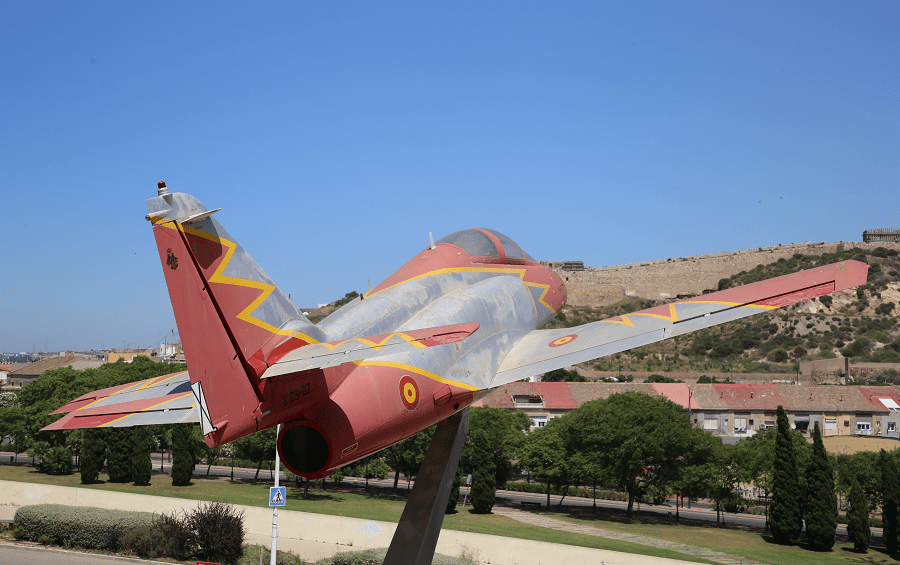The CASA C-101 Aviojet is a low-wing single engine jet-powered advanced trainer and light attack aircraft designed and manufactured by Spanish aircraft company Construcciones Aeronáuticas SA (CASA).
The C-101 was developed in response to a Spanish Air Force requirement, which needed a replacement for the already outdated Hispano Saeta. During 1975, CASA commenced work on what would become the C-101. In addition to its own design team, technical assistance was provided by Germany’s Messerschmitt-Bölkow-Blohm (MBB) and the United States’ Northrop. During June 1977, the first of four prototypes performed the type’s maiden flight. The design was somewhat reminiscent of other jet trainers of the era, such as the BAE Hawk and the Alpha Jet, but was less aerodynamically sophisticated, being equipped with an unswept wing. Performance of the C-101 during flight testing was reported in excess of predictions.
A monument in Cartagena, 2013.
Construcciones Aeronáuticas SA (CASA) was a Spanish aircraft manufacturer that was founded in 1923 and began manufacturing aircraft the following year. In 1999 it became a subsidiary of the EADS (European Aeronautic Defence and Space Company) under the name EADS CASA and in 2009 was absorbed into Airbus Military. CASA is noted for designing and producing military transport aircraft such as the CASA C-212 Aviocar, the CASA CN-235, the CASA C-295 and the CASA C-101 trainer/ground attack aircraft.
Construcciones Aeronáuticas SA (CASA) was founded by José Ortiz-Echagüe in 1923 and began work on a factory in Getafe in May 1924, building Breguet aircraft under license. The first order covered 26 19 A.2s; total production of this type eventually reached 400 units.
CASA built a second factory in Cadiz in 1926 to construct a licensed copy of the German Dornier Do. J Wal seaplane. They built 17 aircraft for the Spanish Air Force, 12 for the Naval Aviation branch of the Spanish Navy and two for commercial use. CASA also operated several branch facilities in Spain for the repair and overhaul of aircraft. In 1929 the CASA-1 flew – the first CASA designed aircraft.
King Alfonso XIII visited the main factory in 1930. CASA also built the French Breguet 19, two of which would be made especially famous. One, was the Breguet XIX GR (Grand Raid) named the Jesus del Gran Poder, currently preserved in the Museo del Aire de Cuatro Vientos (Madrid), which flew between Seville and Bahia (in Brazil), in 1929. This aircraft was piloted by Captains Ignacio Jiménez and Francisco Iglesias and covered 6746 km in 43 hours 50 minutes. The other was the Breguet XIX Super Bidon, named Cuatro Vientos (Four Winds); it was flown by Mariano Barberán and Joaquín Collar Serra to Havana in Cuba in 1933.
In 1932 CASA obtained a license from the UK aircraft company, Vickers, to build 25 Vickers Vildebeest land-based torpedo bombers, which were powered by French Hispano 600 hp engines.














